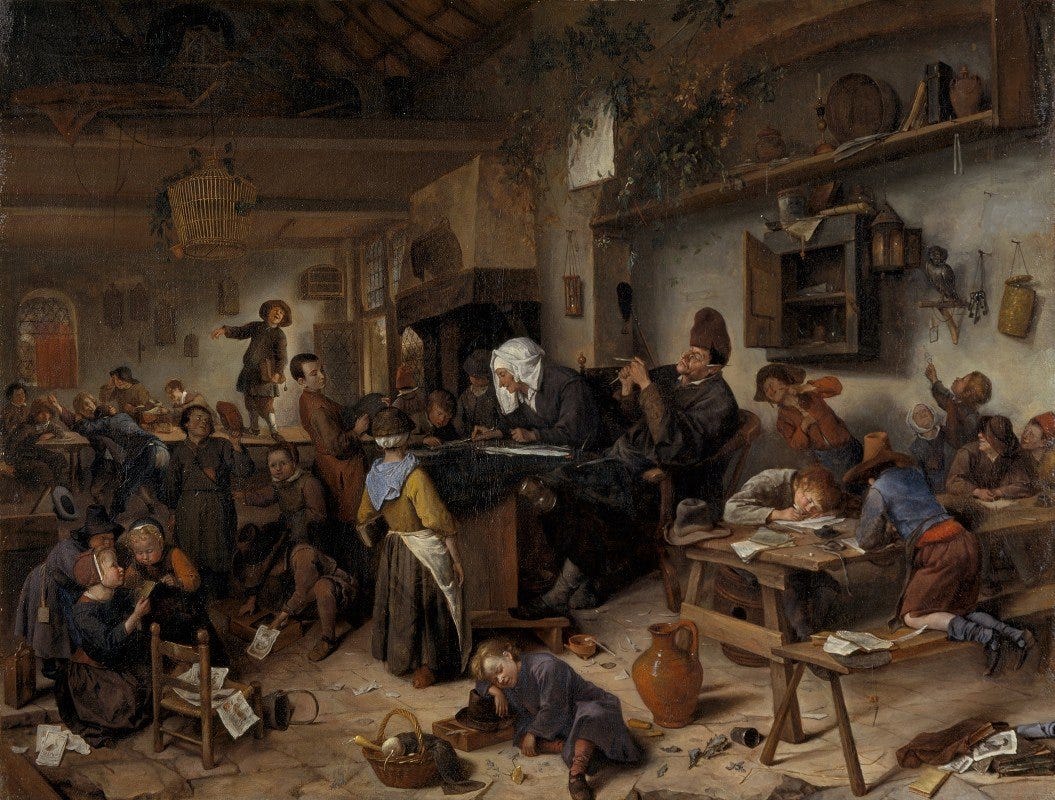5 characteristics of an inspiring learning environment
Schools are the cornerstone of humanity's evolution
An inspiring environment is one that makes you want to get out of your bed every morning- one that makes you feel good and happy.
Our schools do the opposite. They favor academic success over student’s wellbeing, even though a good mood improves achievements [1]. As is seen with other topics, our education system has a hard time keeping up with the research on wellbeing for students. There are also lots of narratives to debunk: we’ve been educated within a society that associates happiness with stupidity or selfishness, when science tells us that happiness is useful and functional [2].
In this article, we will explore 5 qualities your learning environment must cultivate to increase your students' wellbeing, and therefore their success:
Autonomy
Autonomy is an essential quality for a learning space. Some alternative schools have made it the foundation of their system (see democratic schools). Importantly, autonomy comes with responsibility for the decisions you’re making, both for yourself and the collective. This gives a sense of meaning that also enhances wellbeing [4].
It’s time to break the narrative that young students cannot make decisions for themselves. Involve your students in the curriculum and teaching organization & watch their drive and wellness grow!
Peers
When I was 18, in collaboration with a startup accelerator, I co-founded a program for young creators. Officially, the idea was to teach them how to create a muse. But we knew that real success would be if the group became a set of peers. It was clear that what made the difference was not the quality of our speakers, but the space we created in which they themselves would teach each other the skills and topics most important to them.
When building a learning experience, community is the most important thing you need to nurture. Create a space where students learn from, motivate and challenge each other.
Specific education on wellbeing
Even in the greatest learning spaces, specifically teaching practices that induce wellbeing is essential. Usually, soft skills are a foundational part of that. Those tools (NVC, improvisation, emotional management, autosuggestion…) will help navigate disagreement and failure while also teaching students how to be confident. This will support learners as they develop into exceptional humans, while also giving them mental space to focus on learning.
Dedicate a part of your program to teaching some of them. This will support learners as they develop into exceptional humans.
The right amount of challenges vs. rest & reflection
A good learning space balances challenges, which induce curiosity and stimulation, with rest and reflection which solidify the learning experiences.
Most educational spaces are made to be highly challenging, but they rarely teach about the importance of an integration time within the learning process. Not only does including that time benefit the wellbeing of the student, it also teaches them to reflect on what they’ve learned and favors their ability to retain information [6].
The best tools for that are writing & informal discussions. Walking and wandering around also works well. How could you organize some dedicated time to allow the kids to rest & reflect on their learning experience?
Playfulness
People often complain about children spending a lot of time playing video games. But what makes them love those games so much? And what could we learn from that when trying to create a better education system? This would take a whole article to explain, but here’s one thing you definitely have to remember: in games, failures are seen as feedback that creates excitement and curiosity instead of nervousness. That desire to do better induces both more learning and more wellbeing [7].
You instill playfulness in your environment when failing makes winning even more exciting. What’s your relationship with mistakes and how can you embody a growth mindset yourself?
The main narratives around improving performance often point toward productivity concepts. In reality, if you want to make your students smarter, more creative and better learners, you should focus on making them feel happier!
Thanks for reading!
From the Internet by Zelda :-)
Subscribe for more like this every week:
Hey there! It’s Zelda; I’ve been writing about people’s wellness & education since I was 14. The unsatisfied child that I was keeps inspiring me to build the future of education. Share with me your thoughts here: zeldapoem@gmail.com
Sources:
[1] [3] https://www.amazon.com/Happiness-Unlocking-eries-Psychological-Wealth-dp-1405146613/dp/1405146613/ref=mt_other?_encoding=UTF8&me=&qid=
[2] https://edtechbooks.org/wellbeing
[4] https://centerofinquiry.org/uncategorized/ryff-scales-of-psychological-well-being/
[5] https://teaching.fsu.edu/tips/2020/10/02/rest-is-essential-for-learning-productivity/#:~:text=Breaks%2C%20including%20breaks%20to%20walk,breaks%20can%20lead%20to%20burnout.
[6]





